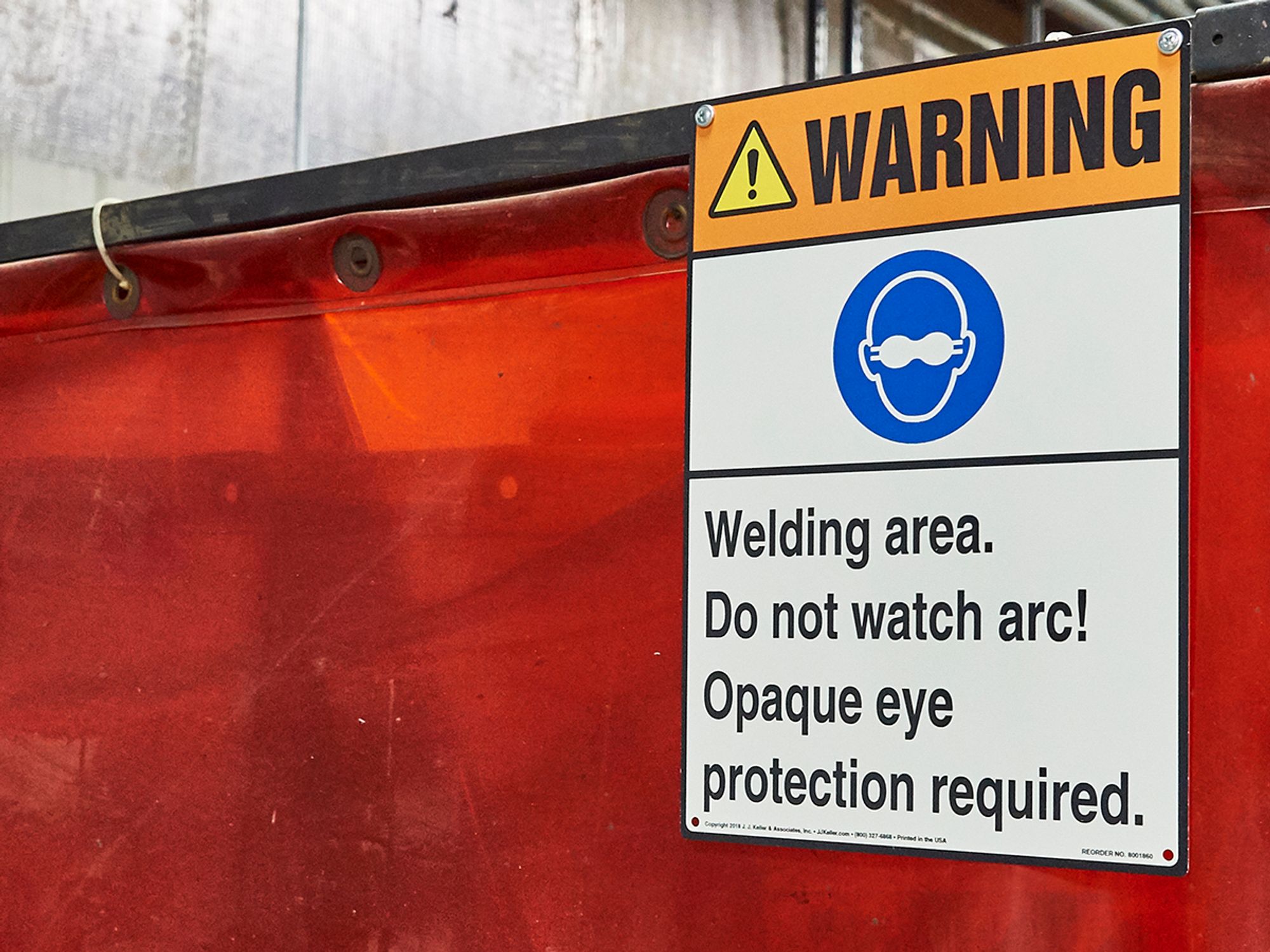Sign formats and color schemes

- The look of a sign hinges on its format, color scheme, and size.
The look of a sign hinges on its format, color scheme, and size.
Format
The message, signal word, and safety symbol panels can be thought of as puzzle pieces that fit together inside a larger, typically rectangular space. Depending on the panels included, the employer has options when formatting a sign. Most signs will have a two- or three-panel format, in either a horizontal or vertical configuration. Multiple panels of the same type are permitted, e.g., two symbol panels on a single sign.
Because 29 CFR 1910.145 talks about signal word and message panels, it’s understood that Occupational Safety and Health Administration (OSHA) compliant signs must include those two panels at a minimum, in any preferred configuration. Under that regulation OSHA does not require the safety symbol panel unless failure to designate a symbol may lead to accidental injury or property damage. A symbol panel may be added if not required, but a symbol panel alone is not compliant under 1910.145.
Multi-language sign formats are not OSHA-required, but they benefit language-diverse settings.
Color scheme
Certain color schemes are associated with sign types and surround shapes. The color schemes of the sign elements of signs will be governed by the OSHA regulation that applies (if any) and whether the employer instead follows the American National Standards Institute (ANSI) Z535.2 color scheme.
OSHA’s color scheme under 29 CFR 1926.200 for construction aligns with ANSI Z535.2, but the color scheme under 1910.145 conflicts. As stated earlier in the "Sign Elements" discussion though, it appears an employer may follow the ANSI standard if that employer can demonstrate that its actions provide equal or greater worker protection than the OSHA standard. Whichever color scheme is chosen (OSHA or ANSI), the employer should use it consistently in the workplace.
Sign size
Standard sign sizes in inches include 7x10 and 10x14, but signs may need to be larger. The size to choose depends not on the regulations but rather on:
- Amount of text — Message text should be as concise as possible.
- Font type — Best practice calls for a sans serif font type. All capital letters should be reserved for short messages or for words that need emphasis.
- Font size — Font size is contingent on a safe viewing distance, which is the nearest a worker can get to a sign to read and react to it without being exposed to the hazard. The reading environment is also a factor. ANSI Z535.2 showcases a look-up table with suggested font sizes, but, generally, the greater the distance and poorer the reading environment, the larger the size of the message text. Once the employer determines the message font size, the minimum font size for the signal word like DANGER can be calculated (message height + (0.5 x message height) = minimum signal word height). That way the signal word scales larger than the message text, but it can be larger than the minimum.
However, note that for construction, OSHA 29 CFR 1926.200 explains that ANSI Z35.1-1968 and ANSI Z535.2-2011 contain rules in addition to those specifically prescribed by 1926.200. Employers in construction must follow either ANSI Z35.1-1968 or ANSI Z535.2-2011, with respect to such additional rules, OSHA says. This is important because ANSI Z35.1-1968 has required “standard proportions” for sign sizes and panel sizes.
